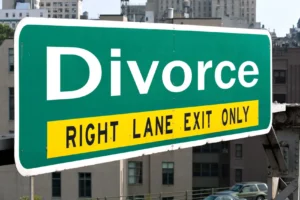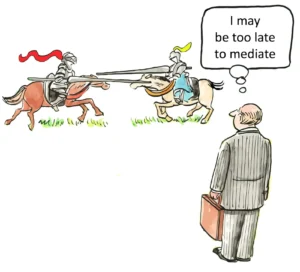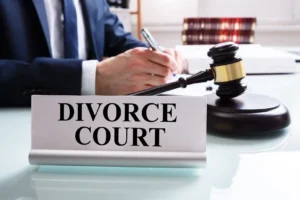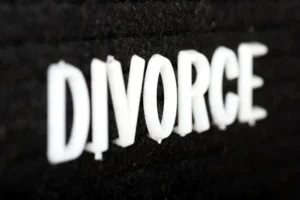Can I Sue for Wrongful Termination?
The question “can I sue for wrongful termination” represents one of the most common inquiries employees have after losing their jobs under circumstances they believe to be unjust or illegal. While the emotional impact of termination often drives individuals to seek legal recourse, the reality of wrongful termination law in the United States presents a more nuanced landscape than many anticipate. Understanding the legal grounds for such claims requires careful examination of both federal and state laws, as well as the specific circumstances surrounding the employment relationship and subsequent termination.
The doctrine of at-will employment, recognized in most states, establishes that employers may terminate employees for any reason or no reason at all, provided the termination does not violate specific legal protections. This doctrine creates a presumption that favors employer discretion in hiring and firing decisions. However, important exceptions to this rule have developed through statutes and common law, creating various grounds upon which a terminated employee might base a wrongful termination claim.
These exceptions do not transform employment relationships into guaranteed positions, but rather establish boundaries that employers cannot cross when exercising their termination authority. When these boundaries are violated, the legal system provides remedies through administrative complaints and civil lawsuits. The challenge for terminated employees lies in determining whether their particular circumstances fall within one of these recognized exceptions, and if so, how to effectively pursue their legal rights.
Understanding At-Will Employment and Its Exceptions
The foundation of American employment law rests on the doctrine of at-will employment, which permits employers to terminate employees at any time, for any legal reason, or for no reason at all. This doctrine similarly allows employees to leave their jobs at any time without consequence. The practical effect of this principle is that most terminations, even those that seem unfair or are based on incorrect information, are legally permissible.
However, significant exceptions to the at-will doctrine have developed over time. These exceptions fall into several categories: statutory protections against discrimination and retaliation, public policy exceptions, implied contract exceptions, and the covenant of good faith exception. Each of these creates circumstances under which termination might be considered wrongful and actionable under the law.
The public policy exception, recognized in most states, prohibits employers from terminating employees for reasons that violate established public policy. This includes firing employees for exercising statutory rights (such as filing workers’ compensation claims), engaging in acts that support the public interest (such as serving on jury duty), refusing to engage in illegal activities, or reporting violations of law (whistleblowing). This exception ensures that employers cannot use their termination power to coerce employees into illegal behavior or to punish them for fulfilling civic obligations.
Discrimination as Grounds for Wrongful Termination
Federal and state anti-discrimination laws provide some of the most well-established protections against wrongful dismissal. Title VII of the Civil Rights Act prohibits employment discrimination based on race, color, religion, sex, and national origin. Additional federal statutes extend these protections to other characteristics: the Age Discrimination in Employment Act protects workers over 40, the Americans with Disabilities Act protects qualified individuals with disabilities, and the Pregnancy Discrimination Act prohibits discrimination based on pregnancy, childbirth, or related medical conditions.
Many states have enacted laws that expand these protections to additional characteristics not covered by federal law. For example, some states prohibit discrimination based on marital status, sexual orientation, gender identity, or political affiliation. These varied state protections create a patchwork of additional rights that may provide grounds for wrongful termination claims beyond federal protections.
To establish a discrimination-based wrongful termination claim, an employee typically must demonstrate that they belong to a protected class, that they were qualified for their position and performing satisfactorily, that they suffered an adverse employment action (termination), and that circumstances suggest discriminatory intent. This last element often proves most challenging, as employers rarely admit to discriminatory motives. Instead, employees frequently must rely on circumstantial evidence, such as disparate treatment compared to similarly situated employees outside the protected class, suspicious timing, or discriminatory comments or patterns of behavior.
Retaliation Claims in Wrongful Termination
Retaliation firing occurs when an employer terminates an employee for engaging in legally protected activities. Various federal and state laws prohibit employers from retaliating against employees who exercise their legal rights or report potential violations. These anti-retaliation provisions serve the crucial function of ensuring that employees can assert their rights without fear of reprisal.
Protected activities that may form the basis for retaliation claims include filing discrimination complaints with the Equal Employment Opportunity Commission (EEOC) or state agencies, reporting safety violations to the Occupational Safety and Health Administration (OSHA), filing workers’ compensation claims, reporting illegal conduct by the employer (whistleblowing), or participating in investigations of such complaints. The key element in retaliation claims is establishing a causal connection between the protected activity and the termination.
Courts often look to temporal proximity—how soon after the protected activity the termination occurred—as one indicator of retaliatory intent. However, timing alone is rarely sufficient. Other evidence that may support retaliation claims includes inconsistent explanations for the termination, deviation from established disciplinary procedures, or disparate treatment compared to similarly situated employees who did not engage in protected activities. Employers typically defend against such claims by asserting legitimate, non-retaliatory reasons for the termination, requiring employees to demonstrate that these reasons are pretextual.
Contract Violations and Wrongful Termination
While most employment relationships are at-will, some employees work under express or implied contracts that limit an employer’s right to terminate the relationship. When termination violates these contractual limitations, employees may have grounds for a wrongful termination lawsuit based on breach of employment contract.
Express employment contracts may specify a definite term of employment, outline specific procedures that must be followed before termination, or enumerate the only grounds upon which termination may occur. These contracts create exceptions to at-will employment by explicitly limiting the employer’s termination authority. When employers fail to honor these contractual provisions, terminated employees may sue for breach of contract.
Implied contracts can arise from employer representations in employee handbooks, policy manuals, or other communications that create reasonable expectations about job security or disciplinary procedures. For example, if an employee handbook outlines a progressive discipline policy that requires specific steps before termination, courts in some jurisdictions may treat this as an implied contractual obligation. Similarly, oral assurances about job security or the conditions under which termination might occur can sometimes create implied contractual rights.
The implied covenant of good faith and fair dealing, recognized in some states, imposes a duty on employers not to terminate employees in bad faith or for reasons that undermine the employment relationship’s agreed-upon benefits. This exception is narrowly applied and typically requires evidence of particularly egregious employer conduct, such as terminating an employee to avoid paying earned commissions or benefits.
Public Policy Violations as Wrongful Termination
The public policy exception to at-will employment prohibits terminations that violate established public policy, even in the absence of specific statutory protections. This exception recognizes that employers should not be permitted to use their termination power to undermine important societal interests expressed through public policy.
Common examples of public policy violations include terminating employees for refusing to commit illegal acts, exercising statutory rights, fulfilling legal obligations, or reporting illegal conduct. For instance, firing an employee for refusing to falsify financial records, serving on jury duty, filing a workers’ compensation claim, or reporting environmental violations to regulatory authorities would likely violate public policy in most jurisdictions.
The public policy exception requires identifying a clear and well-established public policy expressed in constitutional provisions, statutes, regulations, or judicial decisions. The connection between this policy and the termination must be direct—the employee must have been fired specifically for engaging in conduct that the public policy seeks to encourage or for refusing conduct that the policy seeks to discourage. This requirement prevents employees from manufacturing public policy claims based on vague or personal notions of appropriate conduct.
Constructive Discharge Claims
In some cases, employees resign rather than being formally terminated, but may still have grounds for wrongful termination claims under the theory of constructive discharge. This doctrine recognizes that employers sometimes make working conditions so intolerable that a reasonable person in the employee’s position would feel compelled to resign.
Constructive discharge claims require demonstrating that the employer created or permitted working conditions so objectively intolerable that resignation was a reasonable response. These conditions must be more severe than mere unpleasantness, personality conflicts, or ordinary workplace stress. Examples might include persistent harassment, discriminatory treatment, assignment of degrading tasks unrelated to the employee’s job, extreme schedule changes designed to force resignation, or dramatic reductions in pay or responsibilities.
Additionally, employees generally must show that the employer knew or should have known about these conditions and failed to address them. In most jurisdictions, employees are expected to utilize internal complaint procedures before resigning, giving the employer a reasonable opportunity to remedy the situation. Failure to do so may undermine a constructive discharge claim.
When successfully established, constructive discharge is legally equivalent to formal termination, allowing the employee to pursue wrongful termination claims as if they had been fired. This doctrine prevents employers from escaping liability by forcing employees to resign rather than formally terminating them.
Gathering Evidence for Wrongful Termination Claims
Building a successful wrongful termination case requires substantial evidence to overcome the presumption of at-will employment and establish that the termination falls within a recognized exception. The evidence-gathering process should begin as soon as an employee suspects potential wrongful termination, ideally before the termination occurs.
Documentation of the employment relationship and termination circumstances forms the foundation of most wrongful termination claims. Relevant documents include employment contracts, offer letters, employee handbooks, performance evaluations, disciplinary records, communications regarding the termination, and any evidence of discriminatory or retaliatory motives. Employees should preserve these documents, making copies before returning company property upon termination.
Witness testimony can provide crucial support for wrongful termination claims, particularly in establishing discriminatory or retaliatory intent. Colleagues who observed discriminatory comments, disparate treatment, or the circumstances surrounding protected activities and subsequent termination may offer valuable testimony. However, obtaining such testimony often proves challenging, as current employees may fear retaliation themselves if they support a former colleague’s claims.
Timing evidence—the chronology of events leading to termination—often plays a significant role in wrongful termination cases, particularly those involving retaliation claims. Documenting the sequence and timing of protected activities, complaints, and subsequent adverse actions helps establish the causal connection necessary for retaliation claims. Similarly, in discrimination cases, evidence showing that the employer treated similarly situated employees outside the protected class more favorably can help establish discriminatory intent.
Administrative Procedures and Filing Requirements
Before filing a wrongful termination lawsuit based on discrimination or certain types of retaliation, employees typically must exhaust administrative remedies by filing a charge with the Equal Employment Opportunity Commission (EEOC) or equivalent state agency. This administrative filing requirement serves as a prerequisite to litigation and is subject to strict time limitations—generally 180 or 300 days from the discriminatory act, depending on whether the state has its own anti-discrimination agency.
The EEOC investigation process begins with the employee filing a charge describing the alleged discrimination or retaliation. The EEOC notifies the employer and typically offers mediation. If mediation is unsuccessful or declined, the EEOC investigates the charge, requesting information from both parties. Following investigation, the EEOC may find reasonable cause to believe discrimination occurred and attempt conciliation, file a lawsuit itself (rare), or issue a “right to sue” letter allowing the employee to proceed with private litigation.
For wrongful termination claims not based on discrimination or retaliation under federal statutes—such as contract-based claims or public policy violations—administrative filing requirements vary by state. Some states require filing with state labor departments or other agencies before proceeding to court, while others permit direct filing of lawsuits. Understanding and complying with these jurisdiction-specific requirements is essential for preserving wrongful termination claims.
Statute of Limitations Considerations
Wrongful termination claims are subject to various statutes of limitations that restrict the time period during which legal action may be initiated. These time limitations vary significantly depending on the legal theory underlying the claim and the jurisdiction in which it arises.
For discrimination-based claims under federal law, employees must file EEOC charges within 180 days of the discriminatory act (extended to 300 days in states with their own anti-discrimination agencies). After receiving a right-to-sue letter from the EEOC, employees have just 90 days to file a federal lawsuit. State anti-discrimination laws may provide different filing deadlines, sometimes longer than federal requirements.
Contract-based wrongful termination claims typically follow the statute of limitations for breach of contract actions in the relevant state, which commonly ranges from three to six years. Public policy-based wrongful termination claims may be subject to personal injury statutes of limitations, which typically range from one to three years depending on the jurisdiction.
These varying limitations periods create a complex landscape that requires prompt action by terminated employees who believe they have wrongful termination claims. Delay in seeking legal counsel and initiating appropriate administrative or judicial proceedings can permanently bar otherwise valid claims, regardless of their merit.
Potential Remedies and Damages
Successful wrongful termination claims may result in various remedies, depending on the legal theory underlying the claim and the jurisdiction in which it is brought. Understanding the potential remedies helps terminated employees assess the practical value of potential claims and make informed decisions about pursuing legal action.
Back pay—compensation for wages and benefits lost from the time of termination until judgment—represents the most common remedy in wrongful termination cases. This remedy aims to place the employee in the financial position they would have occupied absent the wrongful termination. Back pay typically includes lost wages, bonuses, and the value of lost benefits such as health insurance, retirement contributions, and stock options.
Front pay—compensation for future lost earnings—may be awarded when reinstatement is impractical due to hostility between the parties, elimination of the position, or other circumstances that make returning to work unfeasible. Front pay calculations consider factors such as the terminated employee’s age, career trajectory, efforts to find comparable employment, and the likely duration of continued employment absent the wrongful termination.
Reinstatement—restoration to the former position—remains theoretically available in many wrongful termination cases but is rarely ordered in practice due to the practical difficulties of forcing resumed employment in adversarial circumstances. When ordered, reinstatement may include restoration of seniority, benefits, and other employment terms that would have accrued absent the wrongful termination.
Compensatory damages for emotional distress, reputational harm, and other non-economic injuries may be available in certain wrongful termination cases, particularly those involving discrimination or violations of public policy. These damages recognize that wrongful termination often causes significant psychological and social harm beyond mere economic loss. However, some statutory schemes and contract-based claims limit or exclude such damages.
Punitive damages, designed to punish particularly egregious employer conduct and deter similar behavior, may be available in cases involving intentional discrimination, malicious retaliation, or other conduct exhibiting reckless indifference to employee rights. These damages typically require evidence of willful or malicious conduct beyond mere negligence or poor judgment. Many jurisdictions impose caps on punitive damages or require specific showings of malice or reckless indifference.
Practical Considerations Before Filing Suit
Before pursuing a wrongful termination lawsuit, terminated employees should carefully consider several practical factors that may influence the viability and value of potential claims. These considerations help ensure that legal action, if undertaken, represents a prudent use of resources with realistic prospects for meaningful relief.
The strength of available evidence represents perhaps the most important practical consideration. Wrongful termination claims often turn on questions of motive and intent that require substantial circumstantial evidence to establish. Employees should realistically assess whether they possess or can obtain evidence sufficient to overcome the presumption of at-will employment and establish the elements of their specific legal claims.
The potential value of claims, measured against the costs of litigation, requires careful analysis. Wrongful termination litigation typically involves significant attorney’s fees, expert witness costs, and other expenses that may be recoverable only if the employee prevails. Even successful claims may yield limited damages if the employee quickly finds comparable employment (mitigating economic damages) or if statutory caps limit available remedies. This cost-benefit analysis should consider both economic and non-economic factors, including the emotional toll of protracted litigation.
Alternative dispute resolution options, including negotiated settlements, mediation, and arbitration, may offer more efficient and less adversarial means of resolving wrongful termination claims. Many employers prefer settlement to avoid the costs, uncertainty, and potential reputational damage of public litigation. Similarly, employees may benefit from faster resolution and the ability to negotiate non-monetary terms such as neutral references or confidentiality provisions that courts cannot typically order.
Career implications of wrongful termination litigation deserve serious consideration. Filing suit against a former employer may create challenges in securing new employment, particularly within the same industry or geographic area. Prospective employers may view litigious former employees as potential risks, even when their claims have merit. This reality does not mean valid claims should be abandoned, but rather that the potential career impact should factor into the decision-making process.
Recent Developments in Wrongful Termination Law
Wrongful termination law continues to evolve through legislative changes and judicial decisions that expand or contract the exceptions to at-will employment. Staying informed about these developments helps both employers and employees navigate this complex legal landscape.
The expansion of whistleblower protections at both federal and state levels represents one significant trend in wrongful termination law. These protections increasingly shield employees who report various forms of corporate misconduct, including securities violations, environmental infractions, healthcare fraud, and workplace safety issues. The Sarbanes-Oxley Act, Dodd-Frank Act, and various state whistleblower statutes create specific anti-retaliation provisions that provide grounds for wrongful termination claims when employees suffer adverse employment actions after reporting covered misconduct.
Remote work arrangements, accelerated by the COVID-19 pandemic, have generated novel wrongful termination issues. These include questions about employers’ ability to monitor remote workers, terminations related to remote work performance, and geographic complications when employees work in different jurisdictions than their employers. Courts and legislatures continue to address these emerging issues, creating new precedents and statutory provisions that shape wrongful termination law in the remote work context.
Social media-related terminations have prompted courts to consider how traditional wrongful termination doctrines apply to employee speech in digital forums. When employees are terminated for social media posts or online activities, courts must balance employers’ interests in protecting their reputation and workplace harmony against employees’ free speech interests and potential statutory protections for concerted activity or political expression. These cases often turn on whether the online speech relates to working conditions, touches on matters of public concern, or violates legitimate employer policies.
Conclusion: Navigating the Complexities of Wrongful Termination Claims
The question “can I sue for wrongful termination” rarely yields simple answers. The complex interplay between at-will employment presumptions and various statutory, contractual, and common law exceptions creates a nuanced legal landscape that requires careful analysis of specific facts and applicable law. While wrongful termination remedies exist for employees terminated in violation of recognized legal protections, these remedies are not available for terminations that, though perhaps unfair or based on incorrect information, do not violate specific legal rights.
Terminated employees who believe they may have wrongful termination claims should promptly consult with qualified employment attorneys who can evaluate their specific circumstances against applicable legal standards. These attorneys can help navigate administrative filing requirements, assess the strength of potential claims, and develop strategies for pursuing appropriate remedies. Given the strict time limitations that apply to various wrongful termination claims, delay in seeking legal counsel may permanently forfeit otherwise valid claims.
Employers, meanwhile, should develop and consistently implement termination policies that comply with applicable laws and contractual obligations. Documentation of performance issues, progressive discipline, and termination decisions helps defend against wrongful termination claims by demonstrating legitimate, non-discriminatory reasons for adverse employment actions. When termination becomes necessary, handling the process with professionalism and dignity not only reduces legal risk but also maintains workplace morale and the employer’s reputation.
Ultimately, the legal system’s approach to wrongful termination reflects an ongoing effort to balance employers’ legitimate need for flexibility in managing their workforce against employees’ interest in protection from arbitrary or legally prohibited termination decisions. This balance continues to evolve through legislative action and judicial interpretation, requiring both employers and employees to stay informed about developments in this dynamic area of employment law.
Citations:
- Employee Fired for Taking Photos of Code Seeks Legal Advice
- Federal Guide to Wrongful Termination and Your Rights
- What It Takes to Prove Wrongful Termination
- At-Will Employment and Wrongful Termination Legal Guide
- Is a Wrongful Termination Lawsuit Worth It in Canada?
- Do I Have Grounds to Sue for Wrongful Termination?
- Five Grounds for Filing Wrongful Termination Lawsuits
- When to Sue Your Employer for Wrongful Termination in Texas
- How to Sue for Wrongful Termination: Step-by-Step Guide
- Construction Worker Seeks Legal Recourse for Termination After Client Conflict
- How to Protect Yourself Working in At-Will Employment
- Can I Sue My Canadian Employer for Wrongful Termination?
- Can I Sue for Wrongful Termination? Legal Advice Needed
- Do I Have Grounds for Wrongful Termination Lawsuit?
- Fired for Refusing to Work Unpaid Overtime: Legal Options
- Can I Sue My Former Employer for Wrongful Termination?
- Where Do I File a Wrongful Termination Lawsuit?
- New Jersey Wrongful Termination Case Discussion
- At-Will Employment Doesn’t Mean You Can Be Fired Illegally
- Is This Wrongful Termination and Should I Sue?
- Can You Sue for Wrongful Termination Without Documentation?
- Lawyer Took My Wrongful Termination Case on Contingency
- Wrongful Termination in At-Will Employment States
- 5 Common Types of Wrongful Termination Lawsuits
- California Wrongful Termination Laws and Employee Rights
- Florida Wrongful Termination: Legal Rights and Remedies
- Wrongful Termination Help: Protect Your Employment Rights
- Proving Wrongful Termination: What Evidence Do You Need?
- California At-Will Employment Exceptions and Protections
- Can You Sue for Wrongful Termination in At-Will States?
- Can I Sue for What I Believe is Wrongful Termination?
- Legal Definition of Wrongful Termination from Cornell Law
- Bureau of Labor Statistics Report on Wrongful Termination
- Wrongful Termination in Pennsylvania: Employee Rights Guide
- Wrongful Termination: Understanding Your Legal Rights
- Exceptions to At-Will Employment in California
- Research on Legal Protections Against Wrongful Termination
- Academic Study on Wrongful Termination Legal Framework
- Research on Employment-at-Will Doctrine and Exceptions
- Scholarly Analysis of Wrongful Termination Claims
- Understanding the Difference Between Unfair and Wrongful Termination
- Was My Termination Unlawful Under New York State Law?
- Wrongful Termination Settlement Experiences and Advice




















